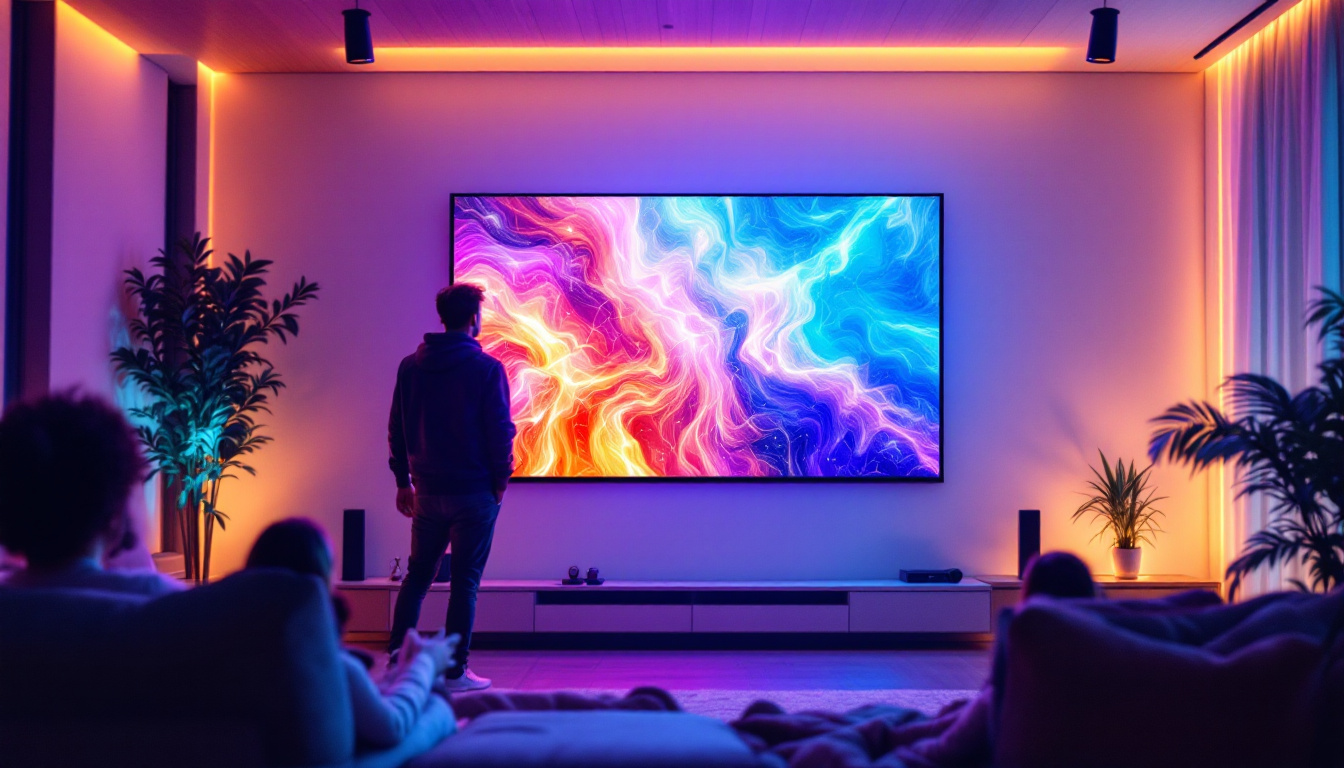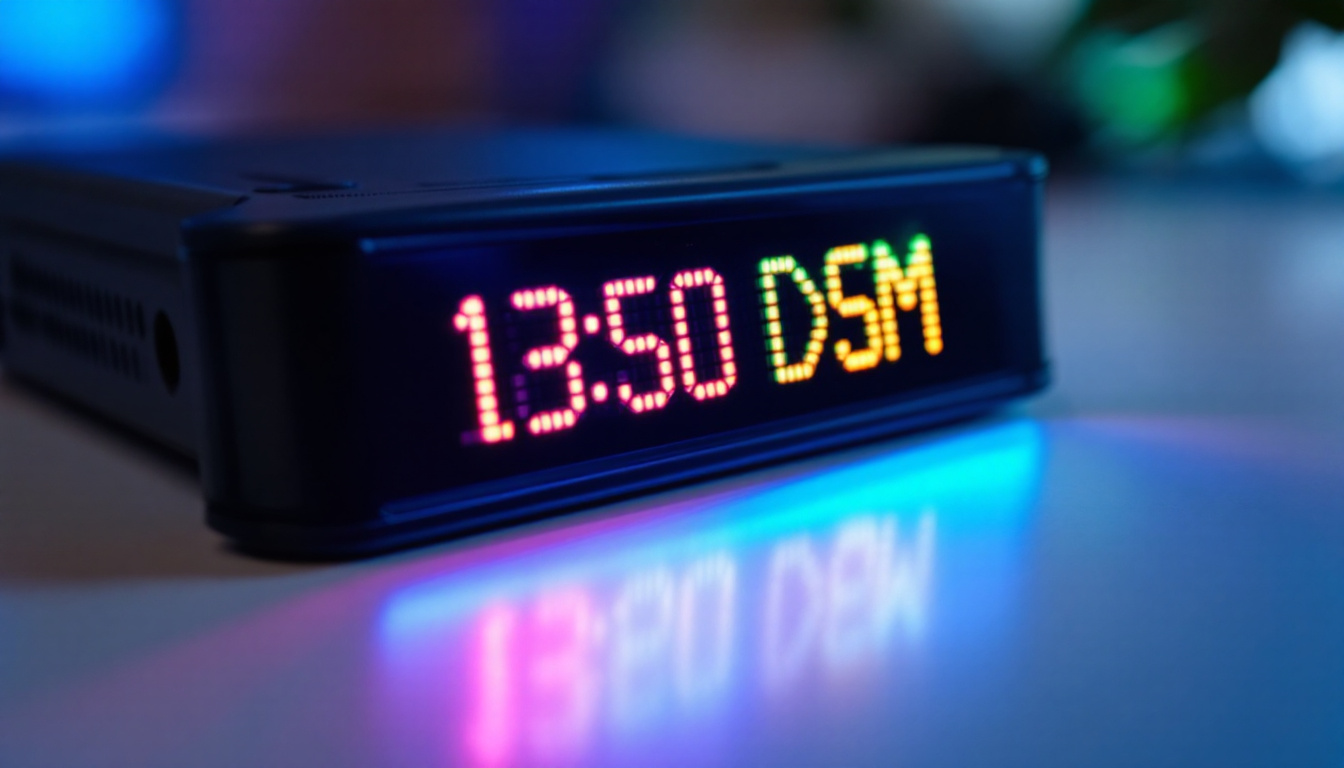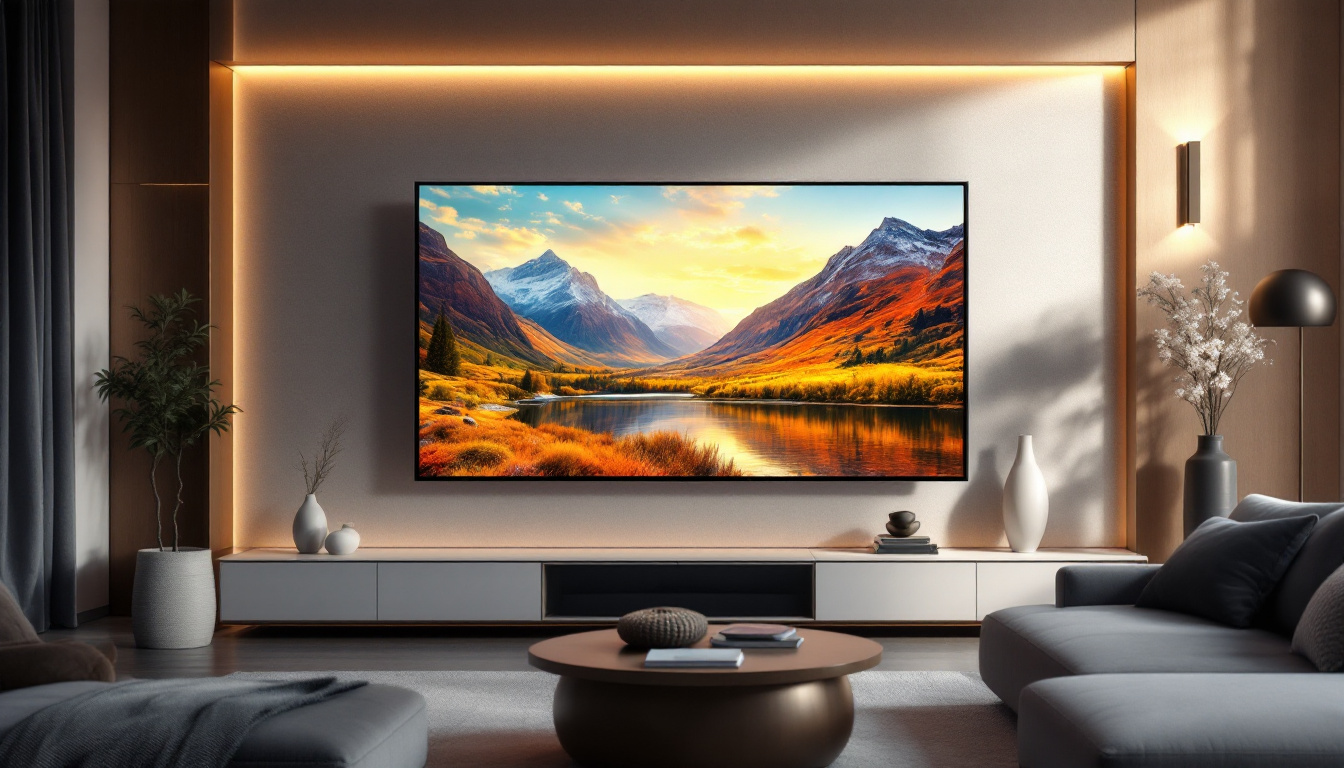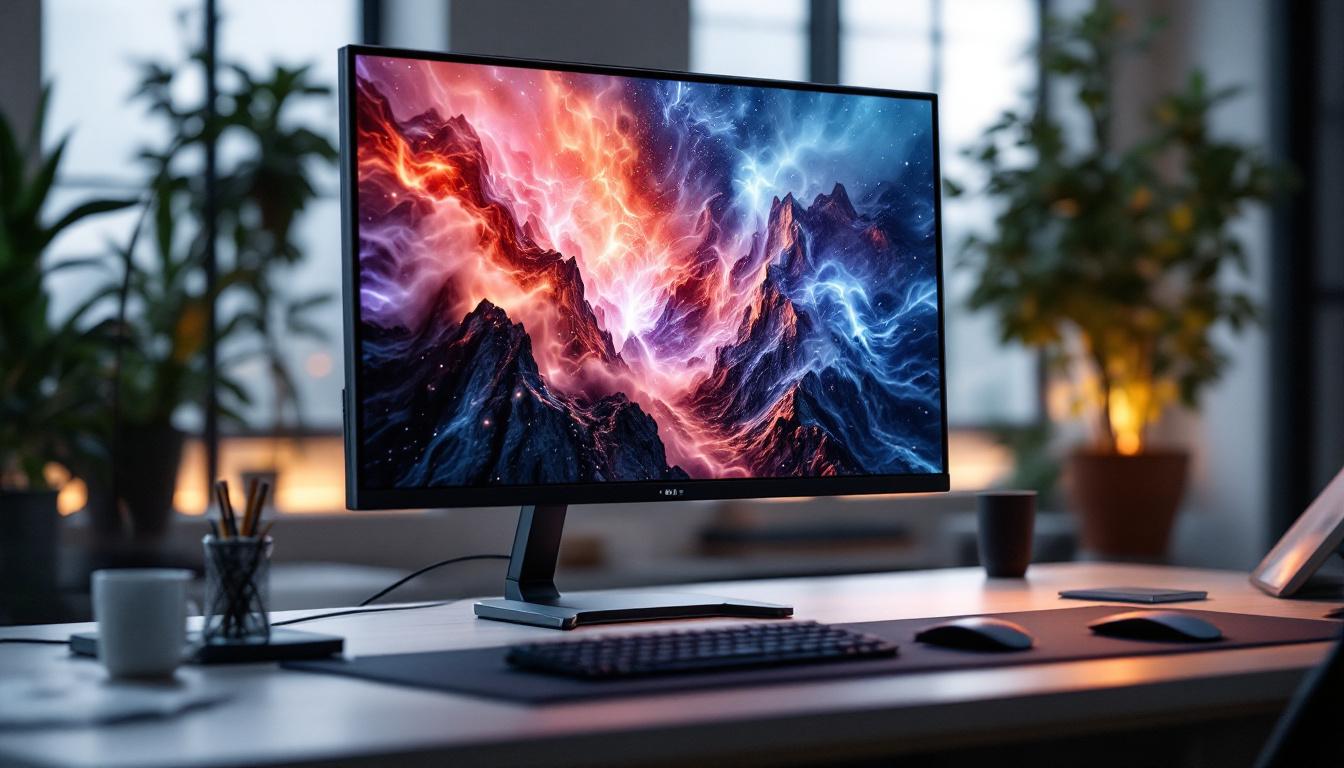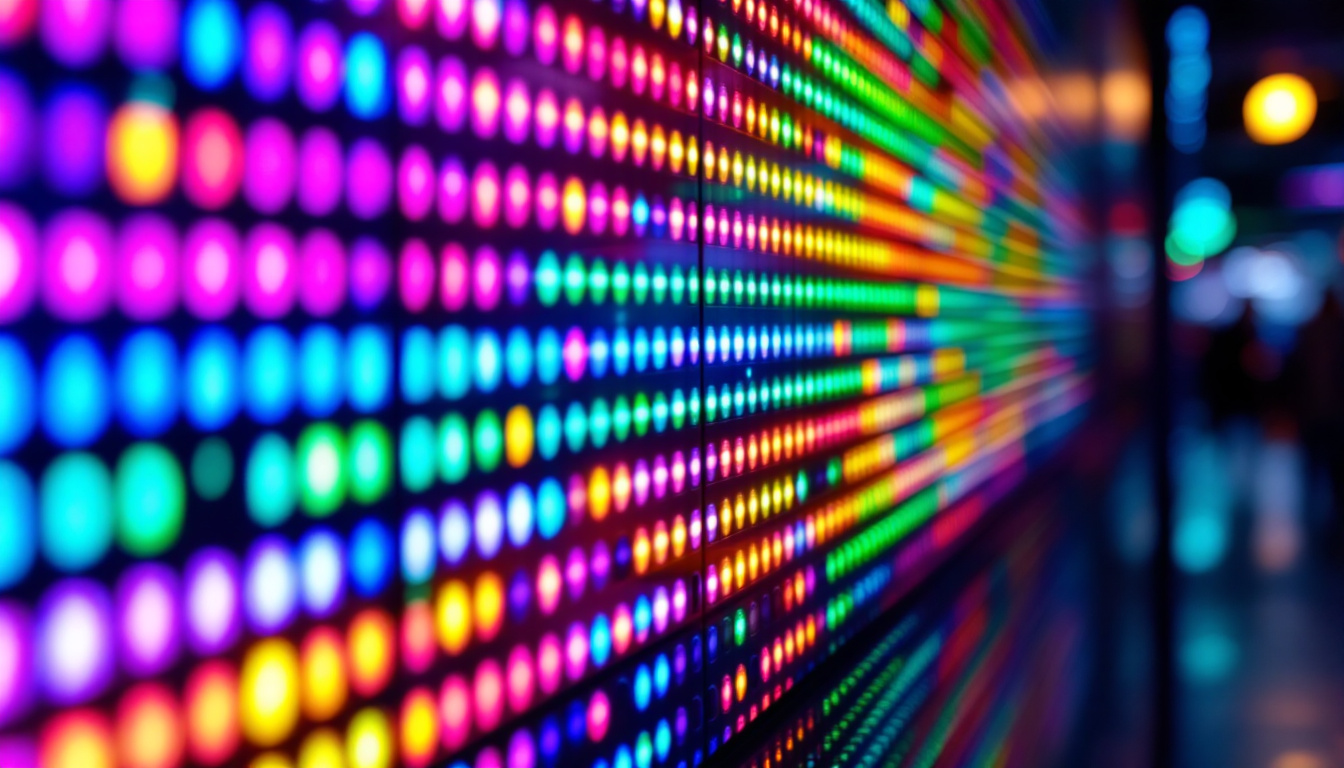In the realm of modern technology, flatscreen monitors have become a staple in both professional and personal environments. Among the various types of displays available, LED (Light Emitting Diode) technology stands out for its efficiency, brightness, and color accuracy. This article delves into the intricacies of LED displays, exploring their benefits, types, and how they compare to other monitor technologies.
Understanding LED Technology
LED technology is a method of backlighting LCD (Liquid Crystal Display) screens, enhancing their performance and visual appeal. Unlike traditional monitors that utilize fluorescent backlighting, LED monitors use small diodes that emit light when an electric current passes through them. This fundamental difference leads to several advantages, making LED displays increasingly popular.
How LED Displays Work
At the core of an LED display is a matrix of tiny diodes that produce light. These diodes can be arranged in various configurations, such as edge-lit or full-array, each offering unique benefits. In edge-lit displays, LEDs are positioned along the edges of the screen, while full-array displays feature a grid of LEDs behind the entire screen surface. This arrangement allows for more uniform brightness and improved contrast ratios.
When a signal is sent to the monitor, the diodes illuminate in response, creating the images seen on the screen. The combination of these diodes and the liquid crystal layer allows for precise control over color and brightness, resulting in vibrant images and sharp text. Furthermore, advancements in technology have led to the development of organic LED (OLED) displays, which utilize organic compounds to emit light, resulting in even richer colors and deeper blacks due to their ability to turn off individual pixels completely.
Advantages of LED Displays
LED displays offer numerous advantages over traditional monitor technologies. One of the most significant benefits is energy efficiency. LED monitors consume less power, which not only reduces electricity bills but also contributes to a lower carbon footprint. This efficiency is particularly beneficial for businesses that rely on multiple screens. Additionally, the longevity of LED technology means that these displays have a longer lifespan compared to their fluorescent counterparts, reducing the frequency of replacements and the associated costs.
Another advantage is the improved brightness and contrast that LED displays provide. With the ability to produce deeper blacks and brighter whites, these monitors deliver a more dynamic range of colors. This feature is especially advantageous for graphic designers, photographers, and gamers who require accurate color representation. Moreover, LED displays often come with enhanced features such as higher refresh rates and faster response times, making them ideal for fast-paced applications like gaming and video editing. The versatility of LED technology also extends to various settings, from home entertainment systems to professional environments, showcasing its adaptability and widespread appeal.
Types of LED Monitors
LED monitors come in various types, each designed to cater to specific needs and preferences. Understanding these types can help consumers make informed decisions when selecting a monitor for their workspace or entertainment setup.
Edge-Lit LED Monitors
Edge-lit LED monitors are among the most common types available. As mentioned earlier, these displays utilize LEDs positioned along the edges of the screen. This design allows for thinner and lighter monitors, making them ideal for users with limited desk space. However, while edge-lit monitors are generally more affordable, they may not provide the same level of uniform brightness as full-array models. Additionally, edge-lit monitors can sometimes suffer from issues like light bleed, where bright spots appear in darker scenes, potentially affecting the viewing experience. Despite these drawbacks, they remain a popular choice for casual users and those who prioritize aesthetics and portability over absolute picture quality.
Full-Array LED Monitors
Full-array LED monitors feature a grid of LEDs behind the entire screen, allowing for more precise control over brightness and contrast. This technology enables local dimming, where specific areas of the screen can be dimmed or brightened independently. As a result, full-array monitors deliver superior image quality, making them a popular choice for professional applications such as video editing and graphic design. Furthermore, these monitors often support higher dynamic range (HDR) content, providing a more immersive viewing experience with enhanced color depth and detail. Users who frequently engage in multimedia tasks or gaming will find that full-array LED monitors excel in delivering lifelike visuals, making them a worthy investment for serious enthusiasts.
OLED vs. LED Displays
While LED displays are widely used, another technology known as OLED (Organic Light Emitting Diode) has gained traction in recent years. Unlike LED monitors, OLED displays do not require a backlight, as each pixel emits its own light. This results in even deeper blacks and more vibrant colors. However, OLED monitors can be more expensive and may be prone to burn-in, where static images can leave a permanent mark on the screen. Despite these concerns, OLED technology offers unparalleled viewing angles and response times, making it a favorite among gamers and movie buffs. Additionally, manufacturers are actively working on solutions to mitigate burn-in issues, such as pixel shifting and screen savers, which may make OLED a more viable option for everyday use in the near future. As the market evolves, consumers will have to weigh the benefits of OLED against traditional LED technologies based on their specific usage scenarios and budget constraints.
Choosing the Right LED Monitor
Selecting the right LED monitor involves considering several factors, including size, resolution, and intended use. By evaluating these aspects, users can find a monitor that best suits their needs.
Screen Size and Resolution
Screen size is one of the first considerations when choosing a monitor. Larger screens provide a more immersive experience, especially for gaming and multimedia consumption. However, the ideal size often depends on the available workspace and personal preference. For example, a 27-inch monitor can be perfect for a home office setup, while a 32-inch screen may be more suitable for a dedicated gaming station. Additionally, the distance from which you view the monitor can influence the optimal size; sitting closer may warrant a smaller screen to avoid overwhelming your field of vision.
Resolution is another critical factor. Common resolutions include Full HD (1920×1080), Quad HD (2560×1440), and 4K (3840×2160). Higher resolutions offer sharper images and more screen real estate, which is particularly beneficial for multitasking and professional work. For instance, graphic designers may prefer a 4K monitor for its superior detail. Furthermore, as more content becomes available in higher resolutions, investing in a monitor with a higher pixel count can future-proof your setup, ensuring compatibility with the latest media and applications.
Refresh Rate and Response Time
For gamers and those who engage in fast-paced activities, refresh rate and response time are essential specifications. The refresh rate, measured in hertz (Hz), indicates how many times the screen updates per second. A higher refresh rate, such as 144Hz, results in smoother motion and a more enjoyable gaming experience. This is particularly important in competitive gaming, where every millisecond counts, and a higher refresh rate can provide a crucial advantage over opponents.
Response time, measured in milliseconds (ms), refers to how quickly a pixel can change from one color to another. A lower response time minimizes motion blur, which is crucial for competitive gaming. Monitors with a response time of 1ms to 5ms are generally recommended for gaming purposes. Additionally, some monitors come equipped with features like variable refresh rate technology, such as NVIDIA G-Sync or AMD FreeSync, which help to eliminate screen tearing and stuttering, further enhancing the gaming experience. As a result, understanding these specifications can significantly impact your overall satisfaction with your monitor, whether for gaming, professional work, or casual use.
Maintenance and Care of LED Monitors
Proper maintenance of LED monitors can extend their lifespan and ensure optimal performance. Regular care not only enhances the viewing experience but also protects the investment made in the technology.
Cleaning the Screen
Keeping the screen clean is vital for maintaining picture quality. Dust and fingerprints can accumulate over time, leading to a diminished viewing experience. To clean the screen, use a microfiber cloth and a gentle cleaning solution specifically designed for electronics. Avoid using harsh chemicals or abrasive materials, as these can damage the screen’s surface.
Adjusting Settings for Optimal Performance
Most LED monitors come equipped with various settings that can be adjusted to enhance performance. Brightness, contrast, and color settings can all be fine-tuned to suit individual preferences and lighting conditions. Additionally, many monitors offer preset modes for specific activities, such as gaming or photo editing, which can significantly improve the overall experience.
Future Trends in LED Display Technology
The landscape of LED display technology is continually evolving, with innovations aimed at enhancing performance and user experience. Emerging trends suggest exciting developments on the horizon.
Mini-LED Technology
Mini-LED technology represents a significant advancement in LED displays. By utilizing smaller diodes, manufacturers can create more localized dimming zones, resulting in improved contrast and brightness control. This technology aims to bridge the gap between traditional LED and OLED displays, providing enhanced performance without the drawbacks associated with OLED.
MicroLED Displays
MicroLED displays are another exciting innovation, featuring microscopic LEDs that emit their own light. This technology promises to deliver exceptional brightness, color accuracy, and contrast ratios, making it a strong contender for future display solutions. MicroLED displays are still in the developmental phase but have the potential to revolutionize the monitor market.
Conclusion
LED displays have transformed the way users interact with technology, offering a blend of efficiency, performance, and visual appeal. With various types available, understanding the nuances of each can help consumers make informed decisions when purchasing a monitor. As technology continues to advance, the future of LED displays looks promising, with innovations like Mini-LED and MicroLED on the horizon.
Whether for gaming, professional use, or everyday tasks, LED monitors provide a versatile solution that meets the demands of modern users. By prioritizing factors such as size, resolution, and refresh rate, individuals can select a monitor that enhances their experience and productivity.
Discover LumenMatrix LED Display Solutions
Ready to elevate your visual experience with the latest in LED display technology? Look no further than LumenMatrix, a pioneer in crafting immersive and dynamic LED displays for a multitude of applications. From vibrant Indoor LED Walls to robust Outdoor LED Displays, and from sleek LED Posters to interactive Floor LED Displays, LumenMatrix offers an extensive range of solutions tailored to your needs. Embrace the future of visual communication and check out LumenMatrix LED Display Solutions today, where innovation meets impact.






